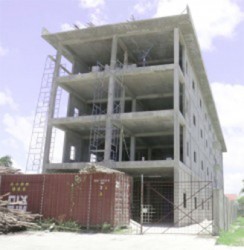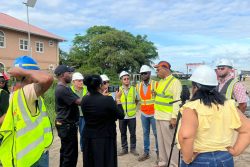By Dale Beresford
Each year, the United States Bureau of Labor Statistics (BLS) releases extensive data regarding workplace injuries, illnesses and fatalities. The data is sliced and diced according to industry, job task, body part, causation and demographics (age, sex, race). This enormous amount of data usually adds up to slightly fewer fatalities and injuries than the year before and points to some industries and demographics where more education is needed.
To the uninitiated this may seem like no more than a bunch of numbers though the reality is that each number represents a person who may have been injured, maimed, made sick or killed in a work-environment and in a circumstance that may well have to do with some deficiency in the work environment. Work injuries and illnesses impose heavy costs on workers, families and the economy.
On average, in the United States, a worker who is seriously injured will earn 15 per cent less over a 10-year period and will bear 50 per cent of the costs associated with that injury. The costs of workplace injuries are usually borne primarily by injured workers, their families, and taxpayer-supported components of the social safety net. These injuries and illnesses add to the pressing issue of income inequality.

The preceding comment that has to do with OSH statistics and their importance does not apply to Guyana. It cannot, since the reality is that here in Guyana there are no statistics with which to make such analyses. As I said in a previous article published in this newspaper, Guyana may have enacted progressive legislation on occupational safety and health but in circumstances where we are unable to effectively enforce that legislation the question arises as to whether it is worth the paper it is written on.
Recorded workplace accidents and their outcomes are a critical vehicle for determining the safety and health credentials of a given workplace or set of workplaces. Since it is true that the vast majority of workplace accidents either do not attract the merited official attention or no attention at all it is impossible to create a reliable national OSH report card for Guyana.
Workplace injuries and illnesses can range in severity from wounds, amputations, back injuries and other serious conditions requiring care beyond first aid to fatal injuries. Approximately half of recorded injuries require at least a day away from work, a job transfer or a work restriction for recovery. Again, in the case of Guyana, the absence of a reliable accident-reporting regime makes it impossible to garner and analyse data relating to workplace accidents and their impact on the economy and on the efficient and timely completion of projects.
The economic costs of occupational injuries and illnesses are enormous. The United States of America National Safety Council, for example, estimates that the cost of fatal and non-fatal work injuries in 2012 reached US$198 billion in 2012. Here again it is disturbing that the absence of reliable statistics means that it is impossible to posit a comparable analysis for Guyana.
Two issues arise here. The first has to do with the impact of workplace injuries and deaths on the national work force—and by extension on growth capacity the country’s economy—while the second has to do with the impact of such accidents and their consequences on the victims and their families.

While I happen to know of a few cases here in Guyana in which employers have put workplace compensation schemes in place, such schemes are – as far as I am aware, few and far between. These schemes have been created to cover the cost of medical treatment of work-related injuries and illnesses and to provide injured and ill workers with short-term and long-term disability payments to help ease the financial burden which workers and their families suffer.
It needs to be emphasized, however, first, that since, in many, possibly most cases of workplace accidents, these do not fall within the investigative scrutiny of the Ministry of Labour, issues of liability and compensation become bilateral matters between employers and families of victims. Here, of course, there is the real danger that ‘settlements’ outside the framework of what the law dictates may be forced on cash-strapped families. Data gleaned from international examples indicates that when such settlements circumvent the regulations workers who receive ‘compensation benefits’ for wage losses suffered on account of workplace injuries can lose as much as 15 per cent of the earnings that they would otherwise have been expected to earn over the subsequent 10-year period.
Again in the case of Guyana there exists a mist of ignorance regarding the real truth about our national safety and health status quo.
As far as the broader impact of Guyana’s OSH limitations are concerned, there is, again, little that can be said about the Guyana situation in circumstances where there is no statistical basis for analysis. One can only wonder as to the impact on the various sectors of the injuries and ill nesses arising out of workplace accidents or unsafe or unhealthy workplace environments. Here, it is worth mentioning that it would be well worth the while to undertake studies in the construction and mining sectors in order to arrive at an understanding of the impact of safety and health-related issues of the workforce in these sectors. I say this because construction and mining are among the key sectors of the Guyana economy at this juncture. Accordingly it would be a matter of national importance to seek to determine the safety and health status in those sectors and, where necessary, to design and implement strategies to cause us to arrive at a clearer understanding of the strengths/weaknesses of the work force in these vital sectors.
Trends in market impact
worker safety and health
Here in Guyana, as in other parts of the world, several trends in the labour market have created greater challenges to worker safety and health.
These trends include the increased presence of employees of multiple employers at the same worksite; the pervasive misclassification of wage employees as independent contractors and the widespread use of temporary employees.
If several firms employ workers at the same site, and employers do not actively collaborate to ensure safe workplaces, all workers at the site may be a higher risk of injury.
Although this pattern of employment has been true in the construction industry for many years, here in Guyana, the focus on the creation of much larger buildings now means that the practice has become even more commonplace. More than that, larger workforces are now in evidence in other sections of the Guyana economy. Beyond that, an increasing number of workers may well not be employees of the employer who owns or controls the workplace where they work. Instead, they may be employed by a contractor or subcontractor.
Again, international OSH research suggests that this trend can have a significant, negative impact on the safety and health of workers. To address this, the OSH authorities in the United States often cite employers for endangering the employees of other employers working at the same jobsite.
While the situation is unclear in Guyana, in the global construction industry the proportion of the workforce misclassified as independent contractors is substantial, although documenting it is difficult because the employers are breaking the law and don’t want to incriminate themselves.
Prevention is the best medicine
The most effective solution to the problem of workplace injuries and illnesses is prevention. Workers would be saved pain and suffering and their families would be spared the financial burden of the cost of the injuries and missed work. Few would refute the fact that here in Guyana far too little attention is paid to prevention.
The time is also long overdue for the state to take far more serious steps to ensure that workers with compensable injuries or illnesses receive full compensation. This can only be realized if the Ministry of Labour is able to significantly upgrade its capacity to undertake accident investigations and other occurrences that result in injury or illness to a worker. It is the outcomes of such investigations and not the arbitrary determinations that are so often arrived at that determine compensation entitlements.
The more important issue of course is the failure of many local employers to prevent work injuries and illnesses and the failure of the Ministry of Labour to effectively enforce the laws that compel the employers to place a higher priority on safe workplaces.
Dale Beresford is a Workplace Safety Solutions Specialist





